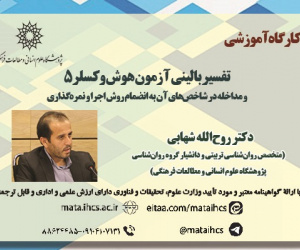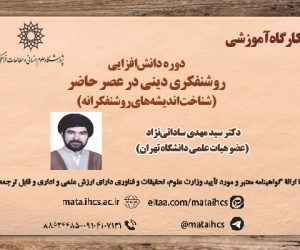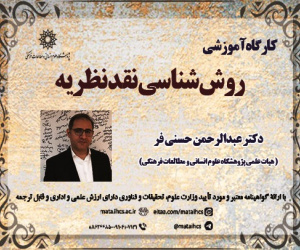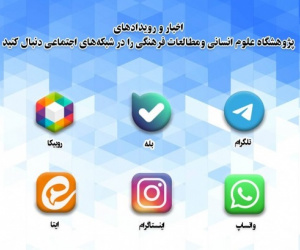اثربخشی برنامه های آموزش تکنیک های خلاقیت محور بر ارتقای رشد تفکر خلاق در کودکان پیش دبستانی (مقاله علمی وزارت علوم)
درجه علمی: نشریه علمی (وزارت علوم)
آرشیو
چکیده
پژوهشگران معتقدند دوران کودکی آغاز شکل گیری روند تفکر خلاق بوده و از اهمیت بالایی برخوردار می باشد. تاکنون اثر متغیرهای فراوانی بر خلاقیت مورد بررسی قرار گرفته است؛ اما اثربخشی آموزش خلاقیت به صورت تلفیقی از تکنیک های مختلف خلاقیت بر ارتقای تفکرخلاق در کودکان پیش از دبستان به طور کامل بررسی نشده است. بر همین مبنا این پژوهش با هدف بررسی تأثیر به کارگیری آموزش تکنیک های مختلف خلاقیت بر افزایش تفکرخلاق کودکان پیش دبستانی با طرح چهار فرضیه اصلی مطرح شد. روش پژوهش از نوع شبه آزمایشی و با استفاده از پیش آزمون و پس آزمون بود. برای سنجش فرضیه های فوق، یک کلاس پیش دبستانی 15 نفره از یکی از مهدکودک های تهران به عنوان گروه آزمایش و کلاس دیگر نیز با 15 کودک در گروه کنترل قرار گرفتند. ابزار اندازه گیری آزمون تصویری تفکرخلاق تورنس فرم B بود که قبل و بعد از ارائه فعالیت های برنامه آموزش خلاقیت در 12 جلسه بکار گرفته شد. سپس برای تحلیل داده ها، از آزمون کوواریانس چندمتغیری و آزمون T استفاده گردید و نتایج نشان داد آموزش این برنامه بر تفکر خلاق کودکان پیش دبستانی اثر مثبت معنی دار داشته و باعث افزایش سطح تفکر خلاق در آنها شده است.The effectiveness of creativity-oriented training programs on promoting the growth of creative thinking in preschool children
Researchers believe that childhood is the beginning of the process of creative thinking and is of great importance. So far, the effect of many variables on creativity has been investigated; however, the effectiveness of creativity training as a combination of creativity techniques on improving children's creative thinking has not been investigated. On this basis, this study was proposed with the aim of investigating the effect of using creativity education on increasing the creative thinking of preschool children with the design of four main hypotheses. The research method was quasi-experimental and using pre-test and post-test. To measure the above hypotheses, a preschool class of 15 children from one of the kindergartens in Tehran was used as an experimental group and another class with 15 children was included in the control group. The measuring tool was Torrance Form B visual test of creative thinking, which was used before and after the activities of the creativity training program in 12 sessions. Then, multivariate covariance test and T-test were used to analyze the data, and the results showed that the teaching of this program had a significant positive effect on the creative thinking of preschool children and increased the level of creative thinking in them. Keywords: comprehensive creativity program, creativity techniques, creativity education, creative thinking, preschool children Introduction Creativity or creative thinking means using mental abilities to create a new thought or concept. Creativity is recognized not only as a necessity but also as a necessary condition for survival. Therefore, the education system should be aimed at training people who have the ability to creatively solve unpredictable problems (Fischer, Oget, & Cavallucci, 2016). The educational program for the pre-primary years, with emphasis on sustainable education, stimulates creativity, imagination, curiosity, critical thinking, as well as communication and cooperation skills of children through play and exploration (Topoliati, M., Plakitsi, K., & Stylianidou, F, 2024). Imagination and talent to varying degrees exist naturally in all children, and in fact, from the very early years of childhood, the environment, objects and people help to develop thinking skills by creating conditions for more comprehensive learning (2007, Clarke); Of course, studies have shown that a rich environment is effective in the development of children's creativity because it encourages active participation in children and positively improves creativity (2022, Liang, Niu, Cheng, et al., 2020, Mahkamovna). In order to develop creative skills, it is necessary and essential that these skills be taught to people at the right time, and what time is more appropriate than childhood when the mind is being formed and the basic foundation of thinking is built in it. For this reason, students who attend game and storytelling sessions are more successful in finding original and new solutions to problems. Considering the special importance of creativity and the pre-primary school period in children and based on the theoretical logic, as well as examining the experimental evidence in this field, it was observed that creative thinking can be improved by teaching creativity techniques. But in what form and in what elements of creativity does this improvement take place? And whether it is possible to increase creative thinking in preschool children by having a comprehensive educational program and teaching creative techniques? Materials & Methods In terms of nature, the present study was applied and its method was semi-experimental with a pre-test-post-test design with a control group. The statistical population of this research consisted of all preschool children in Tehran. The research sample was selected by available sampling method and in two stages. First, in the first stage, the candidates participating in the research were tested in terms of gender, family characteristics, and







